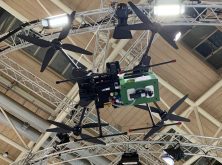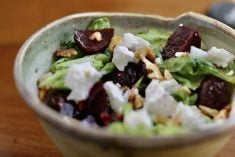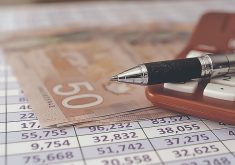BEIJING, China — The Tong Ren Tang Pharmacy lies in a nondescript building in the middle of a busy city block.
A nearby sign advertises “homely food,” an example of imperfect English translations in this culture that was developed thousands of years ago.
The street cacophony of rumbling buses and car horns is muted once visitors step inside and inhale the scent of herbs and potions being sorted, ground and encapsulated in the ground floor pharmacy, busy this day with mostly Chinese clientele.
Upstairs, Dr. Nie, a pharmacist and professor of Chinese medicine, agrees to speak with visitors about treatment philosophies that underpin the ancient remedies.
Read Also

Communication key to bridging generation gap
Each generation is shaped by the predominant forces at play during their formative years. Acknowledging these influences can improve communication among the generations.
Tong Ren Tang Pharmacy is more than 340 years old, which seems ample indication that its prescribed treatments are effective. Given the lengthy development of Chinese medical philosophy, Nie gives a simplified version.
Several meridians run through the human body and millions of points on the surface are connected to these meridians. For example, the heart meridian is connected to points in the palm and the back of the head.
Massage and acupuncture are based on outer connections with inner meridians.
Chinese medicine also concentrates on treating the root problem rather than the symptoms, said Nie.
“The hospital can only check out and treat the disease (you have) already. They don’t know what’s really wrong and in some cases they don’t know how to help.”
That doesn’t mean Nie is dismissive of Western medicine. On the contrary, he says he often recommends a combination of Chinese and Western treatments to his patients.
However, he does say treating symptoms is too common. A better understanding of person’s yin and yang balance can lead to a permanent cure.
As Nie explains it, yin governs a person’s nutrition and how the body makes use of food and drink. Yang governs the organs and their function. Good health results from a balance between the two.
In this clinic, Chinese medicine practitioners feel a patient’s pulse in both wrists and sometimes examine the tongue.
Nie said their training allows them to differentiate as many as 28 different pulse types that indicate the root cause of an ailment.
“Any organ not right, it will reflect in pulse,” said Nie.
Some ailments have their cause in several organs, he added.
Diabetes, which the Chinese call “the British trouble,” is related not only to the pancreas and its insulin production, but also to the spleen, liver and kidney, Nie said.
Herbal medicine tends to have fewer side effects than Western medicines, and treatment is likely to be of shorter duration — three or four months compared to indefinite periods for some Western treatments.
It may also cost less, although Nie said loss of habitat in China has made various herbs scarce and thus more expensive. Some remedies also include animal, mineral and chemical substances.
Nie said age-related ailments are a result of poor nutrition stemming from decreased levels of organ function. The kidneys and spleen figure prominently in his explanations for many health problems.
He said Chinese medical treatments were widely shared only in the 1980s, and their popularity has since spread.
He mentions with pride that the late Princess Diana’s insomnia was successfully treated with Chinese medicine and that Chinese doctors personally delivered the remedies.
A swarm of white-coated pharmacists descend on the group after Nie’s talk. They check pulses, examine tongues and ask questions using interpreters.
In several cases, they identify previous or existing health issues that have bothered some people in the group, without being specifically told about them.
Recommendations are made. The remedies are available downstairs if visitors choose and have a sufficient amount of yuen.















